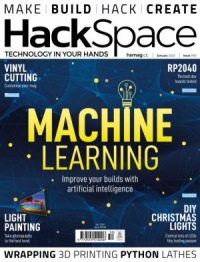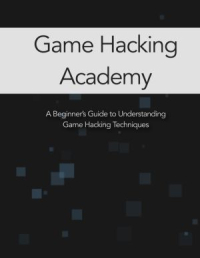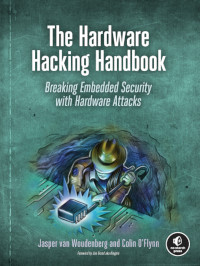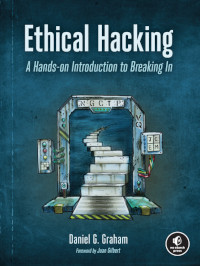Hack eBooks
HackSpace Magazine: Issue 55
There's a huge range of computer-controlled machines used by makers - 3D printers, laser cutters, CNC mills and more - but the plotter is the easiest to make. This makes it a great build for getting started in the world of computer-controlled machines. For around $15 you can create your own drawing machine with our guide. - Learn how hydraulics work - All you need to know about lubrication - Make your own Guitar-Hero style controller - And much more ...
There's a huge range of computer-controlled machines used by makers - 3D printers, laser cutters, CNC mills and more - but the plotter is the easiest to make. This makes it a great build for getting started in the world of computer-controlled machines. For around $15 you can create your own drawing machine with our guide. - Learn how hydraulics work - All you need to know about lubrication - Make your own Guitar-Hero style controller - And much more ...
HackSpace Magazine: Issue 54
What could be more satisfying than building a whole computer, from scratch? You might think it's impossible these days, but we've found a band of makers who are re-creating the clicky switches and flashing LEDs of a bygone age. Have a go yourself! - Design, sustainability and ethics with Jude Pullen; - Add much-needed safety features to a cheap off-the-internet laser cutter; - Send communication signals through the ground; - Get going with gears. ...
What could be more satisfying than building a whole computer, from scratch? You might think it's impossible these days, but we've found a band of makers who are re-creating the clicky switches and flashing LEDs of a bygone age. Have a go yourself! - Design, sustainability and ethics with Jude Pullen; - Add much-needed safety features to a cheap off-the-internet laser cutter; - Send communication signals through the ground; - Get going with gears. ...
Mastering Kali Linux for Advanced Penetration Testing, 4th Edition
Remote working has given hackers plenty of opportunities as more confidential information is shared over the internet than ever before. In this new edition of Mastering Kali Linux for Advanced Penetration Testing, you'll learn an offensive approach to enhance your penetration testing skills by testing the sophisticated tactics employed by real hackers. You'll go through laboratory integration to cloud services so that you learn another dimension of exploitation that is typically forgotten during a penetration test. You'll explore different ways of installing and running Kali Linux in a VM and containerized environment and deploying vulnerable cloud services on AWS using containers, exploiting misconfigured S3 buckets to gain access to EC2 instances. This book delves into passive and active reconnaissance, from obtaining user information to large-scale port scanning. Building on this, different vulnerability assessments are explored, including threat modeling. See how hackers use lat ...
Remote working has given hackers plenty of opportunities as more confidential information is shared over the internet than ever before. In this new edition of Mastering Kali Linux for Advanced Penetration Testing, you'll learn an offensive approach to enhance your penetration testing skills by testing the sophisticated tactics employed by real hackers. You'll go through laboratory integration to cloud services so that you learn another dimension of exploitation that is typically forgotten during a penetration test. You'll explore different ways of installing and running Kali Linux in a VM and containerized environment and deploying vulnerable cloud services on AWS using containers, exploiting misconfigured S3 buckets to gain access to EC2 instances. This book delves into passive and active reconnaissance, from obtaining user information to large-scale port scanning. Building on this, different vulnerability assessments are explored, including threat modeling. See how hackers use lat ...
HackSpace Magazine: Issue 53
Things fall apart, the centre cannot hold. That's why repair skills are so important! This month we're talking upcycling - the art of making beautiful new projects out of old junk. Plus: what happens when your just-for-kicks project turns out to be something that loads of people want? We talk to Timon Skerutsch, creator of the Piunora, to find out. And can you use open source technology to keep satellites in orbit? Of course you can - we meet someone who'll tell you all about it. - Sheet metal CAD - Logic chips - PCB buttons - The smallest RP2040 board we've seen yet ...
Things fall apart, the centre cannot hold. That's why repair skills are so important! This month we're talking upcycling - the art of making beautiful new projects out of old junk. Plus: what happens when your just-for-kicks project turns out to be something that loads of people want? We talk to Timon Skerutsch, creator of the Piunora, to find out. And can you use open source technology to keep satellites in orbit? Of course you can - we meet someone who'll tell you all about it. - Sheet metal CAD - Logic chips - PCB buttons - The smallest RP2040 board we've seen yet ...
HackSpace Magazine: Issue 50
Machine learning used to be the preserve of university research departments with money to burn on high-power, high-cost kit - but not any more! Thanks to a new breed of affordable dev boards, anyone can get in on the act at pocket money prices. We've trawled the makersphere for the best, most creative machine learning projects to show just what can be done. The future of machine learning is awesome - and it's here right now! - Light painting: incredible images created with a Raspberry Pi, LEDs, and the passage of time - Matt Stultz: 3D printing guru on Prusa, printing and the pandemic - Lathe gearbox: use a Raspberry Pi Pico to control the speed of a spinny thing - Christmas PCBs: get into the festive mood with custom flashing decorations ...
Machine learning used to be the preserve of university research departments with money to burn on high-power, high-cost kit - but not any more! Thanks to a new breed of affordable dev boards, anyone can get in on the act at pocket money prices. We've trawled the makersphere for the best, most creative machine learning projects to show just what can be done. The future of machine learning is awesome - and it's here right now! - Light painting: incredible images created with a Raspberry Pi, LEDs, and the passage of time - Matt Stultz: 3D printing guru on Prusa, printing and the pandemic - Lathe gearbox: use a Raspberry Pi Pico to control the speed of a spinny thing - Christmas PCBs: get into the festive mood with custom flashing decorations ...
HackSpace Magazine: Issue 59
You might think that the next big leap in 3D printing would come in the form of a pristine white box from a high-end manufacturing facility. You'd be wrong. The hot new thing in 3D printing is an open source machine you can put together yourself in your kitchen. Come with us, and find out why your next printer should be a Voron. - Grow food to feed yourself during the coming apocalypse; - Use a Raspberry Pi Pico to monitor houseplants; - Cut circuits out of copper tape; - Build more with bricks. ...
You might think that the next big leap in 3D printing would come in the form of a pristine white box from a high-end manufacturing facility. You'd be wrong. The hot new thing in 3D printing is an open source machine you can put together yourself in your kitchen. Come with us, and find out why your next printer should be a Voron. - Grow food to feed yourself during the coming apocalypse; - Use a Raspberry Pi Pico to monitor houseplants; - Cut circuits out of copper tape; - Build more with bricks. ...
Game Hacking Academy
Hacking games requires a unique combination of reversing, memory management, networking, and security skills. Even as ethical hacking has exploded in popularity, game hacking still occupies a very small niche in the wider security community. While it may not have the same headline appeal as a Chrome 0day or a massive data leak, the unique feeling of creating a working aimbot for a game and then destroying a server with it is hard to replicate in any other medium. When I first started learning game hacking years ago, resources were spread out across several sites and were very sparse. Typically, you would find a section of code that linked to a broken site. You would then search around for some forum that would have some part of the broken site in a post and piece together the information. While this rewarded thorough searching, it was a massive time-sink. These days, there are several places where you can find a variety of information regarding game hacking. You can find boilerplate ...
Hacking games requires a unique combination of reversing, memory management, networking, and security skills. Even as ethical hacking has exploded in popularity, game hacking still occupies a very small niche in the wider security community. While it may not have the same headline appeal as a Chrome 0day or a massive data leak, the unique feeling of creating a working aimbot for a game and then destroying a server with it is hard to replicate in any other medium. When I first started learning game hacking years ago, resources were spread out across several sites and were very sparse. Typically, you would find a section of code that linked to a broken site. You would then search around for some forum that would have some part of the broken site in a post and piece together the information. While this rewarded thorough searching, it was a massive time-sink. These days, there are several places where you can find a variety of information regarding game hacking. You can find boilerplate ...
The Hardware Hacking Handbook
Embedded devices are chip-size microcomputers small enough to be included in the structure of the object they control, and they're everywhere - in phones, cars, credit cards, laptops, medical equipment, even critical infrastructure. This means understanding their security is critical. The Hardware Hacking Handbook takes you deep inside different types of embedded systems, revealing the designs, components, security limits, and reverse-engineering challenges you need to know for executing effective hardware attacks. Written with wit and infused with hands-on lab experiments, this handbook puts you in the role of an attacker interested in breaking security to do good. Starting with a crash course on the architecture of embedded devices, threat modeling, and attack trees, you'll go on to explore hardware interfaces, ports and communication protocols, electrical signaling, tips for analyzing firmware images, and more. Along the way, you'll use a home testing lab to perform fault-injecti ...
Embedded devices are chip-size microcomputers small enough to be included in the structure of the object they control, and they're everywhere - in phones, cars, credit cards, laptops, medical equipment, even critical infrastructure. This means understanding their security is critical. The Hardware Hacking Handbook takes you deep inside different types of embedded systems, revealing the designs, components, security limits, and reverse-engineering challenges you need to know for executing effective hardware attacks. Written with wit and infused with hands-on lab experiments, this handbook puts you in the role of an attacker interested in breaking security to do good. Starting with a crash course on the architecture of embedded devices, threat modeling, and attack trees, you'll go on to explore hardware interfaces, ports and communication protocols, electrical signaling, tips for analyzing firmware images, and more. Along the way, you'll use a home testing lab to perform fault-injecti ...
Ethical Hacking
Ethical Hacking is a crash course in modern hacking techniques. It's already being used to prepare the next generation of offensive security experts. In its many hands-on labs, you'll explore crucial skills for any aspiring penetration tester, security researcher, or malware analyst. You'll begin with the basics: capturing a victim's network traffic with an ARP spoofing attack and then viewing it in Wireshark. From there, you'll deploy reverse shells that let you remotely run commands on a victim's computer, encrypt files by writing your own ransomware in Python, and fake emails like the ones used in phishing attacks. In advanced chapters, you'll learn how to fuzz for new vulnerabilities, craft trojans and rootkits, exploit websites with SQL injection, and escalate your privileges to extract credentials, which you'll use to traverse a private network. You'll work with a wide range of professional penetration testing tools - and learn to write your own tools in Python - as you pra ...
Ethical Hacking is a crash course in modern hacking techniques. It's already being used to prepare the next generation of offensive security experts. In its many hands-on labs, you'll explore crucial skills for any aspiring penetration tester, security researcher, or malware analyst. You'll begin with the basics: capturing a victim's network traffic with an ARP spoofing attack and then viewing it in Wireshark. From there, you'll deploy reverse shells that let you remotely run commands on a victim's computer, encrypt files by writing your own ransomware in Python, and fake emails like the ones used in phishing attacks. In advanced chapters, you'll learn how to fuzz for new vulnerabilities, craft trojans and rootkits, exploit websites with SQL injection, and escalate your privileges to extract credentials, which you'll use to traverse a private network. You'll work with a wide range of professional penetration testing tools - and learn to write your own tools in Python - as you pra ...
HackSpace Magazine: Issue 47
If your 3D printer is looking a little dusty and unloved, now's the time to put it to work: we've 50 of the best 3D prints to improve your home, office, workshop and more. From functional to frivolous, we've got ideas for you. It's time to unleash the awesome power of your printer! - Oskitone: where 3D printing meets analogue synth goodness; - Pure Data: make music with this awesome graphical programming language; - Surface mount soldering: solder the way the professionals do it; - Cardboard tubes: do something useful with toilet roll tubes. ...
If your 3D printer is looking a little dusty and unloved, now's the time to put it to work: we've 50 of the best 3D prints to improve your home, office, workshop and more. From functional to frivolous, we've got ideas for you. It's time to unleash the awesome power of your printer! - Oskitone: where 3D printing meets analogue synth goodness; - Pure Data: make music with this awesome graphical programming language; - Surface mount soldering: solder the way the professionals do it; - Cardboard tubes: do something useful with toilet roll tubes. ...
Hacking Kubernetes
Want to run your Kubernetes workloads safely and securely? This practical book provides a threat-based guide to Kubernetes security. Each chapter examines a particular component's architecture and potential default settings and then reviews existing high-profile attacks and historical Common Vulnerabilities and Exposures (CVEs). Authors Andrew Martin and Michael Hausenblas share best-practice configuration to help you harden clusters from possible angles of attack. This book begins with a vanilla Kubernetes installation with built-in defaults. You'll examine an abstract threat model of a distributed system running arbitrary workloads, and then progress to a detailed assessment of each component of a secure Kubernetes system. Understand where your Kubernetes system is vulnerable with threat modelling techniques; Focus on pods, from configurations to attacks and defenses; Secure your cluster and workload traffic; Define and enforce policy with RBAC, OPA, and Kyverno; Dive deep into ...
Want to run your Kubernetes workloads safely and securely? This practical book provides a threat-based guide to Kubernetes security. Each chapter examines a particular component's architecture and potential default settings and then reviews existing high-profile attacks and historical Common Vulnerabilities and Exposures (CVEs). Authors Andrew Martin and Michael Hausenblas share best-practice configuration to help you harden clusters from possible angles of attack. This book begins with a vanilla Kubernetes installation with built-in defaults. You'll examine an abstract threat model of a distributed system running arbitrary workloads, and then progress to a detailed assessment of each component of a secure Kubernetes system. Understand where your Kubernetes system is vulnerable with threat modelling techniques; Focus on pods, from configurations to attacks and defenses; Secure your cluster and workload traffic; Define and enforce policy with RBAC, OPA, and Kyverno; Dive deep into ...










